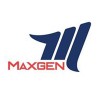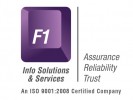
i
Reflections Info
Systems
Filter interviews by
Reflections Info Systems Software Tester Interview Questions and Answers
9 Interview questions
Boundary value analysis is a testing technique that focuses on testing the boundaries of input values.
It involves testing values at the upper and lower limits of valid input ranges
It also tests values just outside of those ranges
For example, if a system accepts values between 1 and 100, boundary value analysis would test values like 0, 1, 2, 99, 100, and 101
Test cases should be written with clear objectives and steps to ensure software functionality and quality.
Identify the objective of the test case
Define the steps to execute the test case
Include expected results and actual results
Ensure test cases cover all possible scenarios
Use a consistent format for test case documentation
Verification ensures that the software meets the specified requirements, while validation ensures that the software meets the customer's needs.
Verification is a process of evaluating the software at various stages to ensure that it meets the specified requirements.
Validation is a process of evaluating the software at the end of the development process to ensure that it meets the customer's needs.
Verification is a ...
Software testing is the process of evaluating a software application to ensure it meets the specified requirements and functions correctly.
Software testing is essential for identifying defects and ensuring the quality of the software.
It involves executing test cases, comparing actual results with expected results, and reporting any discrepancies.
Different types of testing include functional testing, performance te...
Software testing is necessary to ensure the quality, reliability, and functionality of software.
Identify and fix bugs or defects in the software
Ensure the software meets the specified requirements
Validate the software's functionality and performance
Enhance user experience by identifying and resolving usability issues
Increase software reliability and reduce the risk of failures
Ensure compatibility with different pl...
Prioritize testing, communicate with stakeholders, and focus on critical scenarios to manage time effectively.
Prioritize test scenarios based on risk and impact. For example, focus on high-risk features first.
Communicate with stakeholders about the time constraints and negotiate for additional resources or time.
Consider using automated testing for repetitive tasks to save time.
Perform exploratory testing on critic...
To test a software application, I would analyze requirements, create test cases, and execute them while documenting results.
Understand requirements: Review specifications to identify key functionalities.
Create test cases: Develop detailed test cases covering positive and negative scenarios.
Perform exploratory testing: Test the application without predefined cases to uncover unexpected issues.
Automate repetitive te...
QA is the process of ensuring quality in the software development process, while QC is the process of ensuring quality in the final product.
QA focuses on preventing defects, while QC focuses on identifying and fixing defects
QA is a proactive process, while QC is a reactive process
QA involves reviews, inspections, and testing of processes, while QC involves testing of the final product
QA is a continuous process, wh...
SDLC is the process of developing software, while STLC is the process of testing software.
SDLC (Software Development Life Cycle) is a framework that outlines the steps involved in developing software.
The stages in SDLC include requirements gathering, design, coding, testing, deployment, and maintenance.
STLC (Software Testing Life Cycle) is a subset of SDLC that focuses on testing activities.
The stages in STLC incl...
Reflections Info Systems Software Tester Interview Experiences
1 interview found
I applied via LinkedIn and was interviewed in Jun 2021. There were 4 interview rounds.
Interview Questionnaire
14 Questions
- Q1. What is software testing. ?
- Ans.
Software testing is the process of evaluating a software application to ensure it meets the specified requirements and functions correctly.
Software testing is essential for identifying defects and ensuring the quality of the software.
It involves executing test cases, comparing actual results with expected results, and reporting any discrepancies.
Different types of testing include functional testing, performance testing...
- Q2. Explain SDLC and STLC ,the stages in both.
- Ans.
SDLC is the process of developing software, while STLC is the process of testing software.
SDLC (Software Development Life Cycle) is a framework that outlines the steps involved in developing software.
The stages in SDLC include requirements gathering, design, coding, testing, deployment, and maintenance.
STLC (Software Testing Life Cycle) is a subset of SDLC that focuses on testing activities.
The stages in STLC include t...
- Q3. About Agile methdology.
- Q4. About unit testing,Retesting,Regression testing,integrity testing,sanity testing,smoke testing,system testing
- Q5. Difference between verification and validation in testing With examples
- Ans.
Verification ensures that the software meets the specified requirements, while validation ensures that the software meets the customer's needs.
Verification is a process of evaluating the software at various stages to ensure that it meets the specified requirements.
Validation is a process of evaluating the software at the end of the development process to ensure that it meets the customer's needs.
Verification is a stati...
- Q6. Explain Bug life cycle, then given a scenario and expalin in basis of the same
- Q7. How to write Test cases..?
- Ans.
Test cases should be written with clear objectives and steps to ensure software functionality and quality.
Identify the objective of the test case
Define the steps to execute the test case
Include expected results and actual results
Ensure test cases cover all possible scenarios
Use a consistent format for test case documentation
- Q8. Boundary value analysis with an example
- Ans.
Boundary value analysis is a testing technique that focuses on testing the boundaries of input values.
It involves testing values at the upper and lower limits of valid input ranges
It also tests values just outside of those ranges
For example, if a system accepts values between 1 and 100, boundary value analysis would test values like 0, 1, 2, 99, 100, and 101
- Q9. White box and black box testing
- Q10. Why do we need software testing..?
- Ans.
Software testing is necessary to ensure the quality, reliability, and functionality of software.
Identify and fix bugs or defects in the software
Ensure the software meets the specified requirements
Validate the software's functionality and performance
Enhance user experience by identifying and resolving usability issues
Increase software reliability and reduce the risk of failures
Ensure compatibility with different platfor...
- Q11. Given some scenarios and tell them how will i test.
- Ans.
To test a software application, I would analyze requirements, create test cases, and execute them while documenting results.
Understand requirements: Review specifications to identify key functionalities.
Create test cases: Develop detailed test cases covering positive and negative scenarios.
Perform exploratory testing: Test the application without predefined cases to uncover unexpected issues.
Automate repetitive tests: ...
- Q12. Test scenarios for gmail login page.
- Ans.
Test scenarios for Gmail login page.
Verify successful login with valid credentials
Verify error message for invalid email or password
Verify error message for empty email or password fields
Verify forgot password functionality
Verify login page UI elements
- Q13. Explain QA and QC
- Ans.
QA is the process of ensuring quality in the software development process, while QC is the process of ensuring quality in the final product.
QA focuses on preventing defects, while QC focuses on identifying and fixing defects
QA is a proactive process, while QC is a reactive process
QA involves reviews, inspections, and testing of processes, while QC involves testing of the final product
QA is a continuous process, while Q...
- Q14. Then she askd a ques that, i am given with test scenarios and have to do all test cases with the given scenarios, but you have only 15 days to do the testing but need more time, then what will i do..?
- Ans.
Prioritize testing, communicate with stakeholders, and focus on critical scenarios to manage time effectively.
Prioritize test scenarios based on risk and impact. For example, focus on high-risk features first.
Communicate with stakeholders about the time constraints and negotiate for additional resources or time.
Consider using automated testing for repetitive tasks to save time.
Perform exploratory testing on critical ar...
Interview Preparation Tips
I was cleared the technical round and on the same day i had HR round.
HR round was easy and i had answerd all the questions he asked and at last he said that they will reach me with the feed back, after 3 days i tried to contact them through calls and email but they don't attend the call and give reply to the mail.
Skills evaluated in this interview
Top trending discussions






Interview questions from similar companies

Software Engineer Interview Questions & Answers
Saama Technologiesposted on 15 Jul 2022
I applied via Referral and was interviewed before Jul 2021. There were 3 interview rounds.
If you are a fresher , then this is for you else almost no coding test for experienced candidates.
(1 Question)
- Q1. Javascript basics, Angular react general questions depends upon profile.
(1 Question)
- Q1. They asked general questions related to some hectic situation faced in previous company / project..
Interview Preparation Tips

(1 Question)
- Q1. Phone screen about previous experience
(1 Question)
- Q1. Mobile app development basics
(1 Question)
- Q1. Culture fit questions

I applied via Recruitment Consultant and was interviewed in Feb 2021. There were 3 interview rounds.
Interview Questionnaire
8 Questions
- Q1. What are the solid principles?
- Ans.
SOLID principles are a set of five design principles for writing maintainable and scalable code.
Single Responsibility Principle (SRP) - a class should have only one reason to change
Open-Closed Principle (OCP) - a class should be open for extension but closed for modification
Liskov Substitution Principle (LSP) - a subclass should be able to replace its parent class without affecting the system's behavior
Interface Segreg...
- Q2. Difference between ref and out?
- Ans.
Ref and out are both used for passing arguments by reference in C#. Ref is bidirectional while out is unidirectional.
Ref and out are used to pass arguments by reference instead of by value
Ref is used for both input and output parameters while out is only used for output parameters
Ref requires the variable to be initialized before passing while out does not
Example: void MyMethod(ref int x) { x = x + 1; } and void MyMeth...
- Q3. Explain about your project its architecture.
- Q4. What are the rest APIs and popular status codes?
- Ans.
REST APIs are a way to interact with web services. Popular status codes include 200, 404, and 500.
REST APIs allow clients to access and manipulate resources on a server using HTTP requests
Common HTTP methods used in REST APIs include GET, POST, PUT, and DELETE
Status codes indicate the success or failure of a request, with 2xx codes indicating success and 4xx/5xx codes indicating errors
Some popular status codes include ...
- Q5. Explain memory management in c#.
- Ans.
Memory management in C# involves automatic garbage collection and the use of pointers.
C# uses a garbage collector to automatically manage memory allocation and deallocation.
Developers can use pointers to directly manipulate memory, but this is not recommended.
C# also provides tools for managing memory usage, such as the IDisposable interface and the using statement.
- Q6. What are the latest architectural trends in c#?
- Ans.
Microservices, cloud-native, and serverless are the latest architectural trends in C#.
Microservices architecture is gaining popularity due to its scalability and flexibility.
Cloud-native architecture focuses on building applications that are optimized for cloud environments.
Serverless architecture allows developers to focus on writing code without worrying about infrastructure management.
Other trends include containeri...
- Q7. Comparison between .net core and framework
- Ans.
Both .NET Core and Framework are used for developing Windows applications, but Core is cross-platform and lightweight.
Core is open-source and modular, while Framework is a monolithic framework
Core has better performance and scalability than Framework
Core supports microservices architecture, while Framework does not
Core has a smaller footprint and can be deployed as a single executable
Framework has better backward compa...
- Q8. Major advancements in .net core
- Ans.
Major advancements in .NET Core include improved performance, cross-platform compatibility, and enhanced security features.
Improved performance through the use of Span
and other optimizations Cross-platform compatibility with support for Linux and macOS
Enhanced security features such as runtime code generation and data protection
Introduction of .NET Core 3.0 with support for Windows Desktop applications
Integration with ...
Interview Preparation Tips
Skills evaluated in this interview

I appeared for an interview in Jul 2024.
Leet code medium level question
(2 Questions)
- Q1. About Java Streams
- Q2. Restful API coding completion based on given file
- Ans.
Guide to completing a RESTful API coding task with essential pointers and examples.
Understand REST principles: Use HTTP methods (GET, POST, PUT, DELETE) appropriately.
Define clear endpoints: Example - /api/users for user-related operations.
Implement status codes: Use 200 for success, 404 for not found, 500 for server errors.
Use JSON for data interchange: Ensure requests and responses are in JSON format.
Consider authent...
(2 Questions)
- Q1. To check your attitude
- Q2. Given detailed about company and what project you are going to work on?
(5 Questions)
- Q1. Hashmap working
- Q2. Multithreading cases
- Q3. Scenario specific on how to handle multiple events on a single variable to have accurate result
- Ans.
Managing multiple events on a single variable requires careful synchronization to ensure accurate results.
Use locks or mutexes to prevent race conditions when accessing the variable.
Implement event debouncing to limit the frequency of updates, ensuring only the final event is processed.
Utilize a queue to handle events sequentially, processing them one at a time to maintain accuracy.
Consider using atomic operations for ...
- Q4. Database indexing
- Q5. Architecture level

I applied via Naukri.com and was interviewed before Sep 2023. There were 2 interview rounds.
(2 Questions)
- Q1. Self introduction
- Q2. Project description
- Ans.
Developed a web application for tracking personal fitness goals and progress.
Used React.js for front-end development
Implemented RESTful APIs for data retrieval and storage
Utilized MongoDB for database management
(2 Questions)
- Q1. Questions on project
- Q2. Any problems faced
- Ans.
Yes, faced challenges with debugging complex code and integrating third-party APIs.
Debugging complex code with multiple dependencies
Integrating third-party APIs with inconsistent documentation
Resolving compatibility issues between different software components
Interview Preparation Tips


Genral aptitude questions
(4 Questions)
- Q1. Be prepared with your basics
- Q2. Languages and work flow
- Q3. Be aware what you keep in your resume
- Q4. Be strong in a area

(1 Question)
- Q1. They asked general questions related to some hectic situation faced in previous company / project..
Interview Preparation Tips

I appeared for an interview in Jun 2025, where I was asked the following questions.
- Q1. Previous experience, resume related questions
- Q2. SOLID principles, Design Patterns, OOPS concepts and basic coding questions,
Interview Preparation Tips

Software Engineer Interview Questions & Answers
Indus Valley Partnersposted on 3 Jun 2024
I applied via Campus Placement and was interviewed before Jun 2023. There were 2 interview rounds.
Basic aptitude test and was unproctored
(1 Question)
- Q1. It was a online technical round
Interview Preparation Tips
Reflections Info Systems Interview FAQs
Tell us how to improve this page.
Reflections Info Systems Interviews By Designations
- Reflections Info Systems Software Engineer Interview Questions
- Reflections Info Systems Senior Specialist Interview Questions
- Reflections Info Systems Technical Lead Interview Questions
- Reflections Info Systems Senior System Analyst Interview Questions
- Reflections Info Systems Software Engineer Trainee Interview Questions
- Reflections Info Systems Senior Delivery Manager Interview Questions
- Reflections Info Systems Data Analyst Interview Questions
- Reflections Info Systems Software Tester Interview Questions
- Show more
Interview Questions for Popular Designations
Interview Questions from Similar Companies
|
Senior Software Engineer
48
salaries
| ₹5.8 L/yr - ₹13.5 L/yr |
|
Software Engineer
36
salaries
| ₹2.4 L/yr - ₹5.5 L/yr |
|
Data Engineer
13
salaries
| ₹2 L/yr - ₹5 L/yr |
|
System Analyst
13
salaries
| ₹6.3 L/yr - ₹13 L/yr |
|
Machine Learning Engineer
11
salaries
| ₹3 L/yr - ₹10 L/yr |

Maxgen Technologies

JoulestoWatts Business Solutions

Value Point Systems

F1 Info Solutions and Services
- Home >
- Interviews >
- Reflections Info Systems Interview Questions













